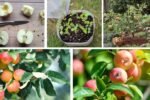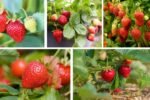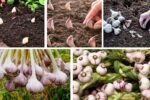If you love the charm of wildflower meadows and want your garden to feel like a serene slice of natural paradise, then creating a naturalistic flower garden is the perfect project for you. Unlike formal gardens with strict lines and symmetry, naturalistic gardens mimic nature’s beauty — spontaneous, flowing, and diverse.
Naturalistic gardens attract pollinators, encourage biodiversity, require less maintenance, and offer a peaceful retreat right outside your door. But how do you capture that effortless, wild look without your garden turning into a tangled mess?
Here are 10 essential tips to create a stunning naturalistic flower garden that looks like it grew effortlessly, yet thrives under your care.

1. Start With Native Plants
The foundation of any naturalistic garden is the use of native plants. These species have evolved in your local environment and are perfectly adapted to your climate, soil, and ecosystem.
Why natives?
- They require less water, fertilizer, and care.
- They provide food and habitat for native pollinators, birds, and beneficial insects.
- They resist local pests and diseases better than many exotics.
Visit local native plant nurseries or botanical gardens to find species that naturally grow in your region. Examples include wildflowers, grasses, and shrubs native to your area.

2. Design With Plant Communities in Mind
In nature, plants grow in communities or associations that support each other. Mimic this by grouping plants that naturally coexist and complement each other’s needs.
How to do this:
- Group plants by sun, shade, and moisture requirements.
- Include a mix of heights and bloom times for continuous color and habitat.
- Combine grasses with wildflowers to replicate meadow-like textures and movement.
This approach creates balance, helps prevent disease, and reduces maintenance.

3. Embrace Imperfection and Irregular Shapes
Natural landscapes rarely feature perfectly straight lines or geometric shapes, so avoid rigid rows or symmetrical beds.
Instead:
- Let beds flow organically with curved edges.
- Allow plants to mingle freely without overly tight spacing.
- Use irregular groupings and clusters of flowers for a more spontaneous look.
This creates a relaxed, flowing garden that feels like a natural ecosystem.

4. Incorporate Native Grasses and Textural Plants
Grasses add soft, flowing movement, contrast, and texture to naturalistic gardens.
Benefits of native grasses:
- They create a meadow or prairie feel.
- They provide winter interest with graceful seed heads.
- They improve soil structure and prevent erosion.
Combine tall grasses like switchgrass or little bluestem with wildflowers for seasonal contrast and depth.

5. Provide Seasonal Interest With Succession Planting
One hallmark of natural landscapes is the changing tapestry of flowers and foliage throughout the year.
Plan for this by:
- Choosing a variety of plants that bloom from early spring through late fall.
- Including early bulbs, mid-summer perennials, and late-season seed heads.
- Incorporating plants with attractive foliage or berries for winter interest.
This ensures your garden never looks dull and always offers something fresh.

6. Mulch Sparingly to Maintain Soil Health
While mulch can suppress weeds and retain moisture, excessive mulching can make a garden look too tidy and disrupt natural processes.
Naturalistic mulch tips:
- Use organic mulches like shredded leaves or bark in thin layers.
- Allow natural leaf litter and plant debris to accumulate in some areas.
- Avoid plastic or heavy mulch layers that block soil organisms.
This approach supports soil life, mimics forest floors, and maintains a natural look.
7. Encourage Wildlife and Pollinators
Naturalistic gardens thrive when pollinators and beneficial insects visit regularly.
How to encourage wildlife:
- Include a diverse range of nectar-rich flowers.
- Provide shelter with native shrubs, deadwood piles, or rock stacks.
- Avoid pesticides and chemical fertilizers.
A garden buzzing with bees, butterflies, and birds is a sure sign of a healthy naturalistic ecosystem.
8. Use Paths and Seating Areas That Blend In
Paths and seating areas should feel like part of the natural landscape, not artificial interruptions.
Design tips:
- Use natural materials like gravel, mulch, or stepping stones.
- Let paths meander gently through the garden.
- Position benches or seating in shaded, peaceful spots surrounded by plants.
These thoughtful touches invite you to slow down and immerse yourself in nature.
9. Allow for Self-Seeding and Natural Regrowth
One way naturalistic gardens maintain their charm is through natural cycles of growth and renewal.
How to foster this:
- Allow some plants to go to seed and drop naturally.
- Avoid overly aggressive pruning or deadheading all blooms.
- Be patient and observe as new seedlings emerge and fill gaps over time.
This dynamic process means your garden evolves, surprises you, and stays true to its natural character.
10. Practice Patience and Observe Nature’s Rhythms
Creating a naturalistic flower garden is a journey, not a quick fix.
Remember:
- It may take several seasons for plants to establish and reach their full potential.
- Observe how plants interact, how wildlife uses your garden, and how the soil responds.
- Adjust plant choices, spacing, or maintenance based on these observations.
With time, your garden will develop into a thriving natural haven that reflects the beauty of the wild — right in your own backyard.
Bonus Tips: What to Avoid in a Naturalistic Garden
- Avoid invasive species or aggressive exotics that can outcompete natives.
- Steer clear of overly formal designs or synthetic materials that disrupt the natural vibe.
- Minimize use of synthetic fertilizers and herbicides to protect soil and wildlife.
Conclusion: Let Nature Be Your Garden Designer
A naturalistic flower garden celebrates the effortless beauty of the wild and offers a sustainable, low-maintenance oasis full of life. By choosing native plants, designing with natural plant communities, and embracing nature’s rhythms, you create a garden that’s not only gorgeous but also environmentally friendly.
So grab your seeds, your favorite native plants, and start designing a garden that feels like a living painting — spontaneous, colorful, and full of life. Your naturalistic flower garden adventure awaits!





